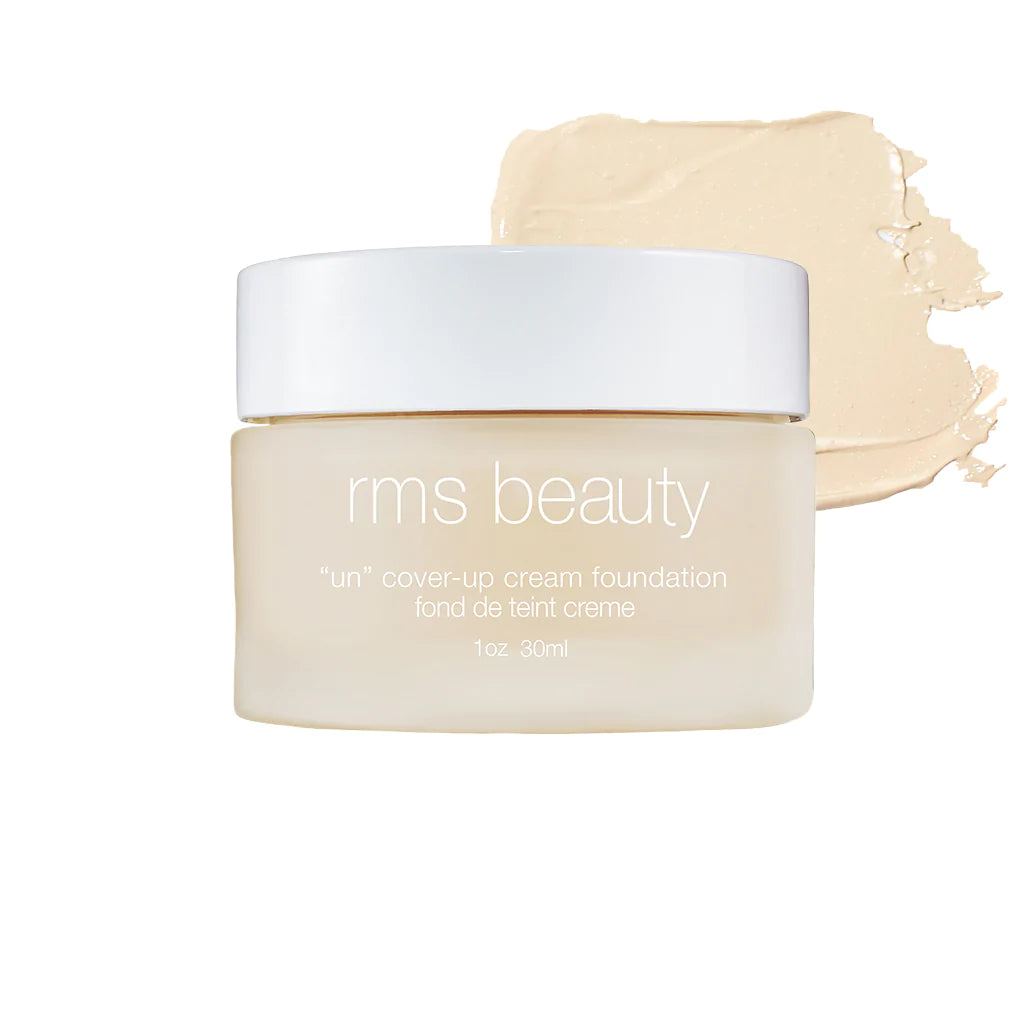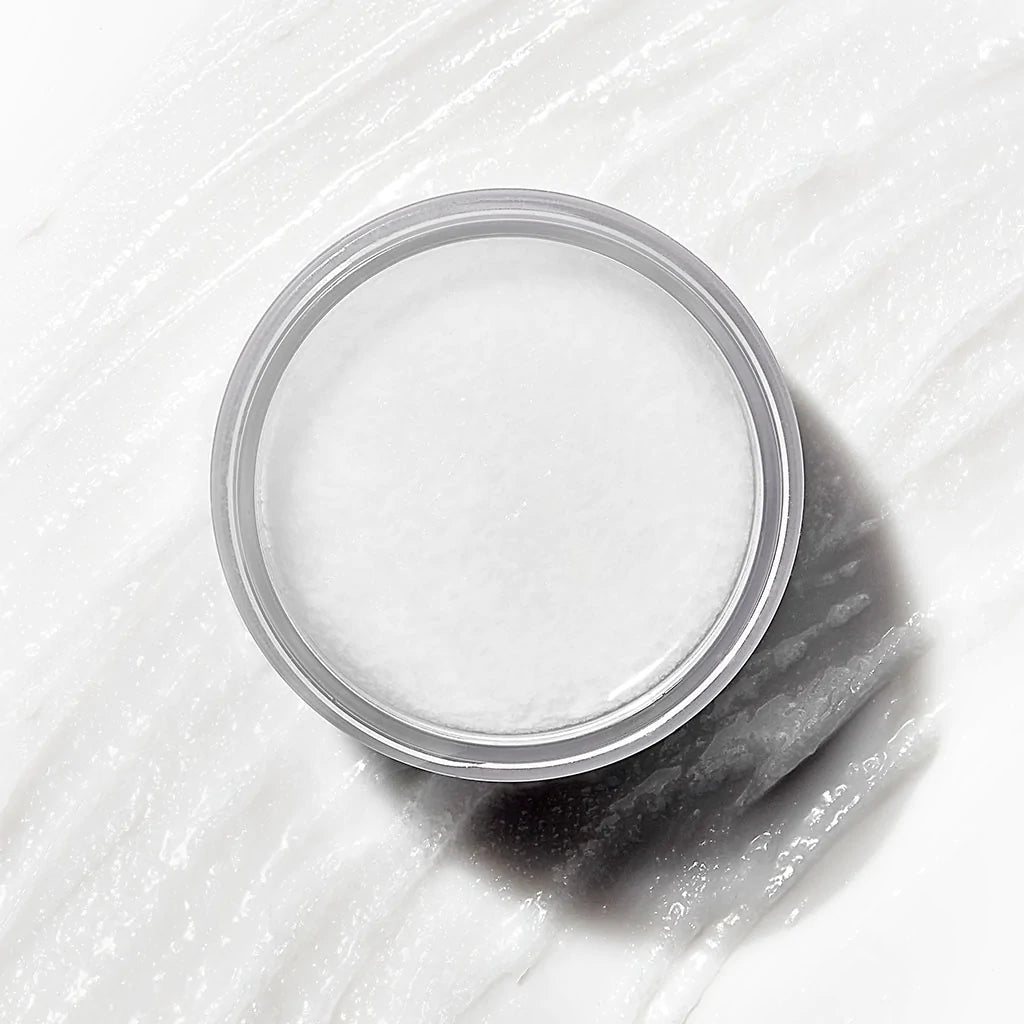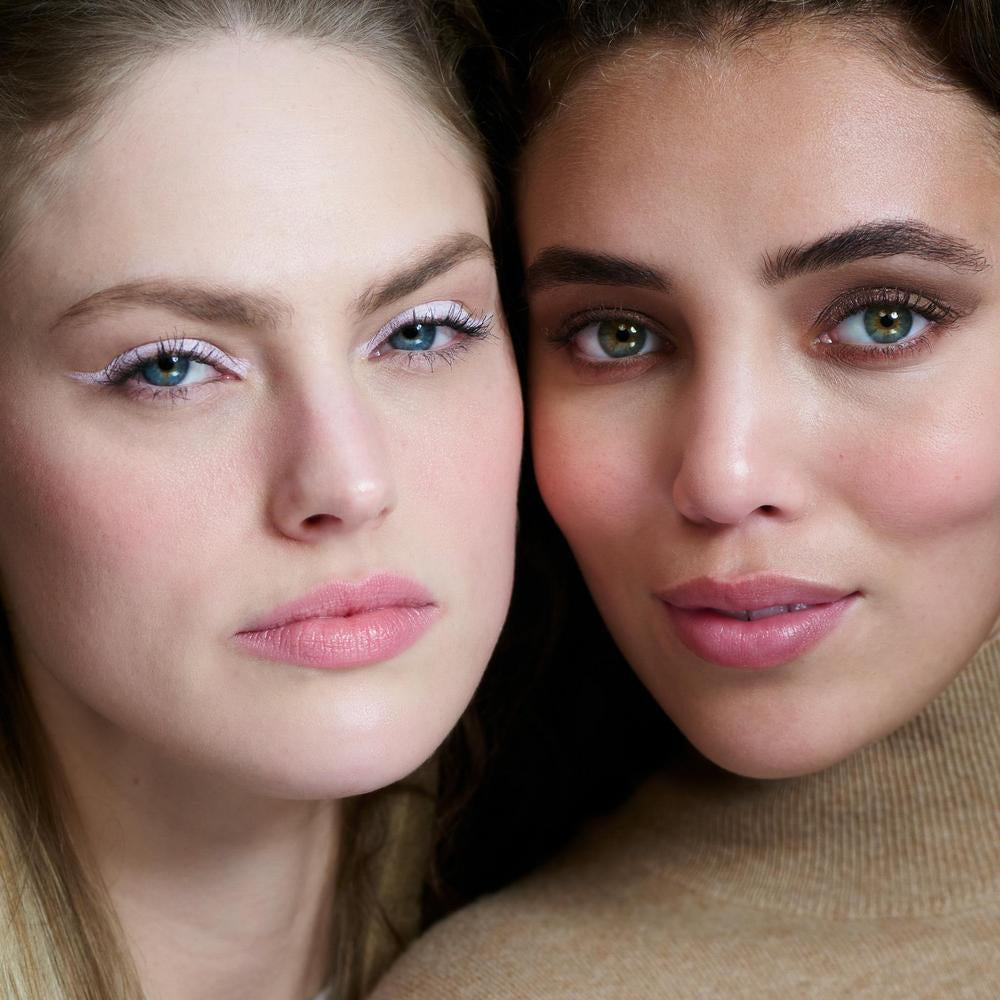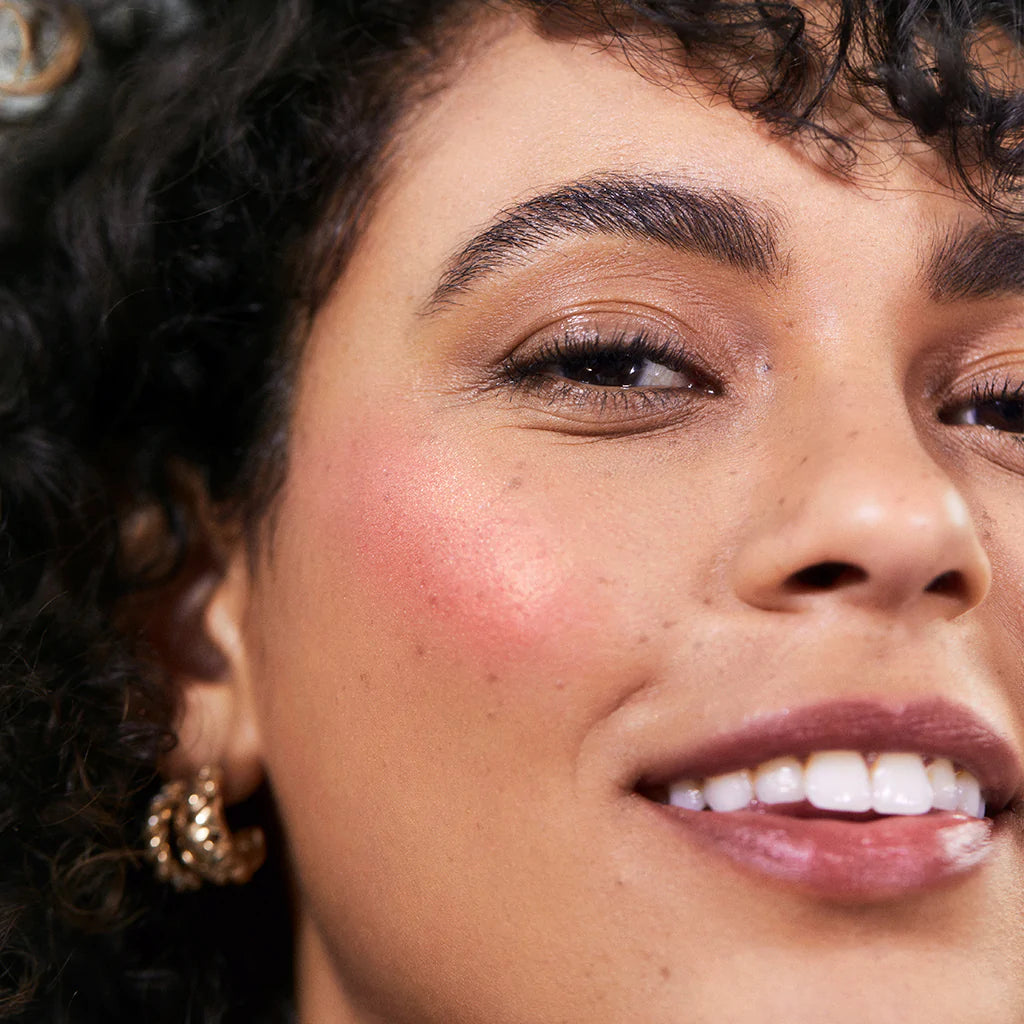Seven Types of Foundation Makeup

It’s the makeup product we’ve been using for decades, along with lipgloss and mascara. Foundation is a staple in the bags of makeup artists and novices alike. Even though you’ve been using it for years, the best foundation for your skin type might be undiscovered.
At RMS Beauty, we understand it can be a big task to sift through so many different makeup products to find the best ones. We make light work of it, giving you all the info you need on seven different types of foundation makeup and how to pick the one that is best for you.
What Is Foundation Makeup?
Foundation is face makeup, which means you can apply it all over your face, not just in a specific spot like eyeshadow or lip color.
Foundation has three important purposes that help build your makeup look.
- It provides a base or canvas for the rest of your makeup. Foundation sits under your blush, bronzer, luminizer, and eye makeup and helps create an even skin tone for your other products.
- It helps give your other products something to grip, which can help your color cosmetics stay in place longer.
- It smooths over fine lines, wrinkles, and blemishes, creating a more even skin texture.
Foundation makeup can be richly pigmented or sheer and comes in different styles and finishes. If you’ve been using a liquid formula for years, we’ve got a few different options you can try.
Where Does Foundation Go on Your Face?
You can apply foundation anywhere on your face. Trends with how much foundation you should wear come and go, but the best looks utilize foundation as a tool to create flawless, true skin. This means using foundation to enhance rather than to cover. Plan to use foundation in these spots.
The Center of Your Face
The center of your face. Your t-zone is prime real estate for foundation because these areas usually contain more redness and unevenness than other areas of your skin. When applying foundation to your t-zone, start in the center and blend outward. This will help ensure you don’t have harsh lines or streaks of foundation on your skin.
Your Eye Area
Eyes are tricky for foundation application. Eye skin is incredibly thin and delicate and one of the first places we begin to notice fine lines and wrinkles. Using the wrong foundation (or too much foundation) in this area can cause your product to settle into creases, which will end up looking cakey.
When applying foundation or concealer under your eyes, start by applying near the inner corner of your eye. You can also add product to the outer edge of your eyes. Avoid placing any product directly under your eyes, as most of the redness and discoloration is typically on the edges.
Around Your Nose
It’s common to have redness around the edges of your nostrils, and foundation can help even out those areas, tame redness, and improve your skin tone.
If you prefer a full coverage look, you can add foundation to your cheeks and blend it outward. Avoid placing a thick layer of any type of foundation near your hairline or on your jawline. It can be virtually impossible to blend the foundation properly in these areas.
Seven Different Types of Foundation
When you first started wearing it, liquid foundation was probably one of the only options available. Today, you can grab a foundation in practically any type of formula, from liquid to dry powder.
1. Liquid Foundation
The OG of foundation, most of us started with a little screw-top bottle of liquid foundation and a wedge-shaped sponge.
Liquid foundation is exactly what it sounds like, a pourable foundation that you can apply with fingertips, a sponge, or a brush.
Liquid foundations are buildable, making coverage adjustable. If you find you need more coverage in your t-zone but less coverage under your eyes, a liquid foundation allows you to do it all with one product.
Liquid foundations can be formulated with water or plant-based oils, and they work well for virtually all skin types.
2. Powder Foundation
Powder foundations can be loose or pressed. They generally offer lighter coverage than a liquid foundation and aren’t necessarily as buildable as liquids or creams simply because it’s harder to keep the first layer of powder in place while applying another layer on top.
Powder foundation is a good choice for people with oily skin seeking products to soak up excess oil, but any skin type can use it provided they get the correct formula. For instance, choosing a powder foundation that includes hydrating ingredients will be important if you have dry skin.
Powder foundation can give your skin an airbrush effect. It’s also lighter coverage but can give you a matte finish. If it’s a dewy finish you want, powder may not be the best option.
For beginners, powder foundation is easy to apply. The biggest risk is applying too much, which can end up making your skin look…well, powdery.
3. Cream Foundation
Thicker than a liquid foundation, creams are a great option for all skin types but are a fan favorite of people with dry skin. They offer medium coverage to full coverage, are buildable, and usually contain ingredients to target certain skin issues.
Popular cream foundations include BB creams and CC creams, which stand for blemish balm cream and color-correcting cream. These may include ingredients like SPF, moisturizers, and even age-fighting compounds.
- One to try: RMS Beauty “Un” Cover-Up Cream Foundation. Rich and hydrating for a luminous, dewy finish that leaves skin looking real and alive. Formulated with wild-crafted buriti oil, organic coconut oil, and adaptogenic herbs, this powerful cream foundation helps even skin tone, keeps skin hydrated, and calms irritation.
Our foundation contains Beauty Oil, our hydrating, plant-based oil that helps reduce the appearance of fine lines and wrinkles. Silica, a naturally occurring compound, helps boost coverage to reduce dark spots and tame redness.
Cream foundations are easy to use, incredibly blendable, and provide a pore-smoothing finish to your skin.
4. Serum Foundation
These types of foundations are trendy new takes on classic liquid foundation. A sort of hybrid between liquid foundation and tinted moisturizer, these include ingredients that are specifically designed to work like your favorite skin care products.
Hyaluronic acid, for instance, is a popular ingredient in serum foundations that help your skin stay expertly hydrated.
5. Stick Foundation
Like it sounds, stick foundation is shaped like a large lip balm. These foundations have been around practically as long as liquid foundations.
Normally, these types of foundations have a twist top to expose the stick of makeup which you can then apply directly to your skin. Then, using a sponge or hand, you’ll blend the foundation into your skin until you have the desired finish. These usually provide full coverage and can be tricky to apply. Depending on the formula, stick foundation can be hard to move on your skin, making it difficult to blend.
6. Tinted Moisturizers
Want your favorite hydrating skincare product but made with light coverage? Introducing tinted moisturizers.
Tinted moisturizers have ultra-light coverage and are great for almost any skin type. They work very well for combination skin types because they provide hydration in places that need it and coverage for oilier areas. These foundations give you a fresh-faced finish that looks incredibly natural, with only a slight tint of pigmentation.
7. Mineral Foundation
Usually found in loose powder form, mineral foundation is a type of natural makeup made up of minerals found in the earth. These can include mica, iron oxides, and zinc oxides. Mineral foundation is also sometimes found in pressed powder formulas.
Zinc oxide is sometimes added to mineral foundations as sunscreen.
How Can I Choose the Right Foundation?
Choosing the right foundation is as easy as 1, 2, 3.
1. Know Your Skin Type
Oily skin types, sensitive skin types, and dry skin types all need different products — even color cosmetics. Focus on making sure your skincare routine is solid before deciding on a formula. For instance, don’t automatically assume you need a powder foundation simply because you have oily skin. Take care of your skin with skin care products that help combat excess oil, and then choose a foundation formula.
2. Find the Right Shade
Start by understanding and finding your skin’s undertone. Once you know your skin undertone, selecting a foundation shade that will best match your skin is much easier.
3. Determine the Coverage You Need
Whether or not you want full coverage foundation or a more natural look, you’ll need to pick the foundation that gives you that level of coverage. You’ll never get heavy coverage from a tinted moisturizer, and you’ll always appear a bit more done up with a stick foundation.
Tips and Tricks
Don’t get discouraged if you don’t get your foundation right the first time. Practice using these tips and tricks.
- Less is more, even if you love full coverage. Start by applying foundation in a thin layer and building as needed.
- Learn to touch up like a pro. If you’re using a liquid or cream foundation, use a damp sponge to gently reawaken your foundation and blend it if it has settled into a line or wrinkle.
For powdered formulas, try pressing a small amount of powder into your skin to touch up areas that have become oily.
- Using the right foundation brush will help keep your foundation in the right spot and make the application a breeze. RMS Beauty’s Skin2Skin Foundation Brush is made with vegan, cruelty-free bristles that mimic skin-to-skin application. This brush provides an easy way to glide different formulations onto your skin.
Foundation isn’t a mystery; it’s a great tool you can use to help create the looks you love.
Touch Base With the Perfect Foundation
At RMS Beauty, you’ll never find questionable ingredients in our foundations. Our formulas work synergistically with your skin to help keep them hydrated, attack the signs of aging, and create the perfect canvas on your skin.
Sources:
Why do bags form below our eyes? | Scientific American




